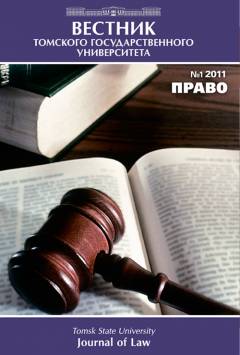Territorial nature protection in Russia and the republic Slovakia: comparative and legal aspects
The continuing ecological crisis inevitably leads to the thought that efforts of all international community but not a separate country are necessary to overcome it. At the same time during the development of international documents the question about the positive experience of member countries - parties to the international nature protection agreements that could be used in the course of preparation of relevant draft conventions and bilateral contracts will arise. Thus, the role of comparative and legal researches allowing to generalize experience of various countries in the sphere of conservation, to reveal common factors of development of national legislation, their strengths and weaknesses increases. One of such directions of research is the comparative analysis of one of the most important parts of the ecological legislation of any state connected with establishment of measures for special protection of certain areas on the territory of the country. Ecological legislation as such can develop in several ways : by means of setting the requirements to separate fields of human activity (for example, in industry, transport, agriculture, energy engineering etc.); by means of establishing special rules of protection of separate natural objects (for example to establish the rules on protection of lands, waters, forests, subsoil riches, fauna and atmospheric air from fires); and, finally, by means of withdrawal of certain land plots from economic use granting them the status of special protection (reserves, national parks, monuments of nature etc.) Having carried out a comparative analysis, the author concludes that there are similar regimes of special protection for unique and valuable natural ecosystems both in Russia and Slovakia but standard fixing of the regime of restrictions and bans on such territories differs. Slovakian legislation has a number of successful approaches (from the viewpoint of legal technique) which could be used in Russia (for example, about the separation of 5 levels of protection in specially protected natural areas). Moreover, they pay much attention in Slovakia to the protection of separate natural ecosystems (caves, falls) but this is not done in Russia though the subjects of the Russian Federation should pay much more attention to it. On the other hand, the experience of functional zoning of some categories of specially protected natural areas in Russia (for example, national parks) could be interesting to the legislators of Slovakia because the establishment of different levels of protection for such zones corresponds to the rule-making tradition of this country.
Keywords
Россия, Словакия, национальный парк, природный парк, памятник природы, режим особой охраны, пещеры, водопады, Russia, Slovakia, national park, natural park, nature sanctuary, mode of special protection, natural monuments, caves, waterfallsAuthors
| Name | Organization | |
| Anisimov Alexey P. | Volgograd Institute of management | anisimovap@mail.ru |
References

Territorial nature protection in Russia and the republic Slovakia: comparative and legal aspects | Tomsk State University Journal of Law. 2017. № 26. DOI: 10.17223/22253513/26/10